What are cankles?
Cankle is a coined word for “ankle” and “calf. The word cankle is slang, not a medical term.
Moreover, it serves as a conversational combination of two words.
Let us understand what are cankles?
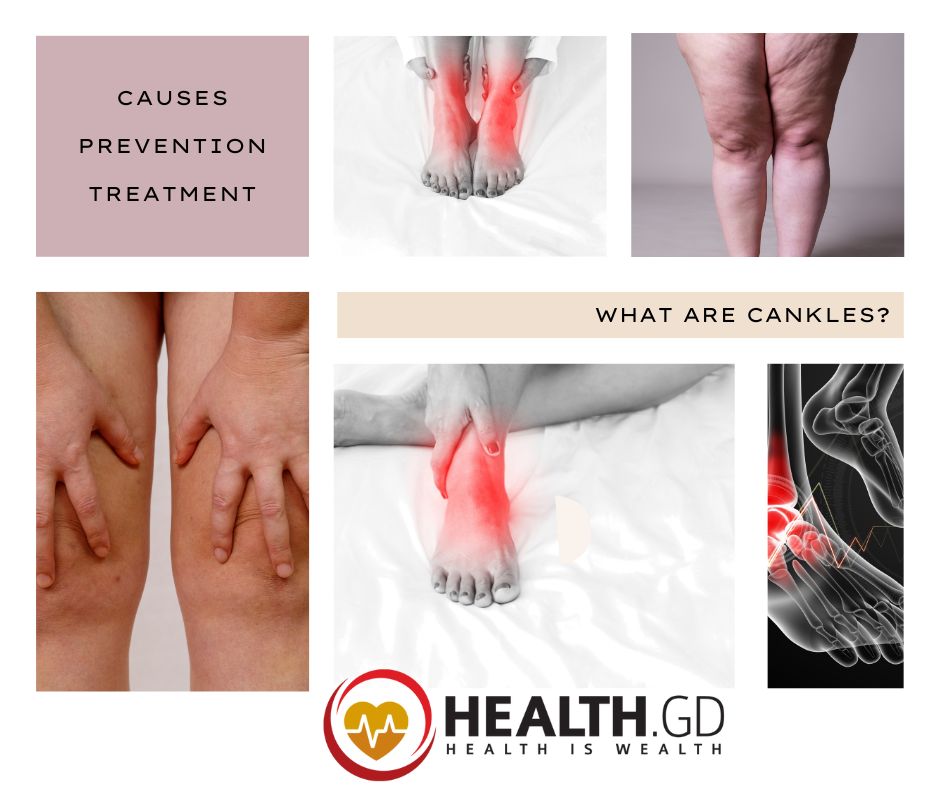
The ankle is the leg part that meets with the calves without any gap.
Note: The ankle is the joint between the leg and the foot, allowing the foot to move up and down and side to side.
It appears to merge it—the excess reserves of fat cells or liquid at the ankle.
It can be by birth and transferred from parents to offspring through the heredity process, or swelling of the ankles also can cause cankles.
Other factors also include in females, such as pregnancy, which may be due to your long hours of work of standing or sitting and other than hot weather, weight gain, etc.
This blog explores the cackles’ possible causes, symptoms, and treatments. Having a large ankle is normal. However, ankles also vary in shape and size.
There is no need to worry about having large ankles or spaces between them.
You must consult a doctor if these cankles have hurt or other symptoms.
This blog explores the possible causes, symptoms, and treatments of cackles.
What are the Causes of Cankles?
We have already discussed what are cankles, and now we will discuss the causes of Cankles.
1. Genetic and Heredity
Causes of cankles include genetics, health lying issues, and other factors.
Genetically, it transfers from parents to offspring as heredity; therefore, the fat distribution within the body determines the possibility of cankles in the baby’s future.
Note: Heredity is the process by which characteristics are passed from one generation to the next.
2. Overweight
The development of the fat cells’ size in the body due to pregnancy or the weight-gaining diet may also lead a person towards cankles.
3. Edema or Swelling
Other factors that influence swelling of the ankles due to the reservation of fluid between calves and ankles also cause cankles.
The medical term for Swelling is Edema.
Edema is a medical condition characterized by an abnormal fluid accumulation in the body’s tissues. This fluid can build up in the spaces between cells, blood vessels, or body cavities such as the abdomen or chest. Edema can be caused by various factors, including renal failure, congestive heart failure, and excess fluid in the body.
Your feet feel stretched, itchy, tight, and puffy in this condition.
Many health conditions can cause swelling of the ankles.
According to the review of 2016 Google trends in the United States and Australia, it is a fact that in the summers, ankle swelling goes to its peak.
4. Obesity
The excessive weight pulls the ankles and other joints, making them swell, which could be another factor of cankles, i.e., obesity.
Obesity is a possible health condition that causes cankles because the whole-body pressure on the ankles causes them to swell and widen between the calves and ankles.
Note: Obesity is a medical condition in which a person has excessive body fat. Obesity can lead to several health problems, including heart disease, diabetes, and high blood pressure.
5. Lipedema
Lipedema, the other health lying factor, is a chronic disease
that causes swelling of the ankles. In this condition, fat restores under the skin on the legs.
Note: Lipedema is a condition that causes the build-up of fat cells in the tissue below the skin. The condition can lead to pain, swelling, and difficulty moving the affected limbs. There is no cure for lipedema, but treatments can help to reduce the symptoms.
It doesn’t affect the skin but happens on both legs. According to studies, 11 percent of women have lipedema, involving them more than men.
In this, a person might experience difficulty in walking.
However, according to Source, people try to lose weight to make the correct body distribution of fat in the lower part.
6. Cellulitis
Infections in the lower part of the body also lead to swelling of the feet.
Skin infection such as Cellulitis affects the lower limb.
Note: Cellulitis is a severe bacterial infection of the skin and soft tissue that can cause sepsis (a potentially life-threatening condition caused by infection). It most commonly affects the legs but can occur anywhere on the body. Symptoms include redness, swelling, pain, and warmth, and treatment typically involves antibiotics and sometimes hospitalization.
7. Gangrene:
Diabetic patients with conditions on the feet and ankles tend to have gangrene.
Gangrene is a serious and potentially life-threatening condition that occurs when tissues in the body die due to a lack of blood flow. Gangrene can affect any body part but most commonly occurs in the extremities, such as the toes, fingers, or hands. Symptoms of gangrene include pain, swelling, redness, and a loss of sensation in the affected area. If left untreated, gangrene can lead to sepsis, amputation, and death.
8. Lymphedema
Similarly, Lymphedema is when a lymphatic system blocks and causes the lymphatic fluid to restore in the body tissues.
Lymphedema is a chronic condition in which the lymphatic system is damaged, causing fluid to build up in the tissues. Lymphedema can occur anywhere in the body but is most common in the arms and legs. The condition can be painful and debilitating and can lead to severe infections. There is no cure for lymphedema, but treatments are available to manage the condition.
It can cause cankles as well.
9. Kidney Problems
Kidney problems also cause ankle swelling.
However, the kidney removes the waste from the body, including potassium.
And kidney disease may restrict it from working appropriately; therefore, the accumulation of potassium cause swelling in the ankles.
10. Liver Problems
Disease in the liver, such as hepatitis or cirrhosis, may lead to the swelling of the face, feet, ankles, and hands. In this, the essential protein, i.e., albumin production restrict. And the accumulation of fluid near the tissue and blood vessels cause swelling.
Note: Hepatitis is an inflammation of the liver, and it can be caused by a viral infection, alcohol abuse, or other factors. Symptoms include fatigue, nausea, and pain in the upper right abdomen. Hepatitis can lead to cirrhosis or liver cancer.
Cirrhosis is a chronic, progressive disease in which normal liver cells are replaced by scar tissue, which prevents the liver from working correctly. Cirrhosis is the 12th leading cause of death in the United States.
11. Hypothyroidism
Hypothyroidism is when the thyroid gland doesn’t produce enough thyroid hormone. This can cause various symptoms, including weight gain, fatigue, and depression.
Hypothyroidism is another health condition that can cause swelling of the ankles and other parts of the body.
12. Cushing’s syndrome
Cushing’s syndrome is a disorder that occurs when the body is exposed to too much of the hormone cortisol. Symptoms may include weight gain, thinning of the skin, easy bruising, muscle weakness, and mood changes.
Cushing’s syndrome is another factor, the large quantity of hormone cortisol which causes fluid retention, leading to swelling.
DVT Deep vein thrombosis and Congestive heart failure (CHF) are also factors leading to cankles.
Note: A deep vein thrombosis is a blood clot that forms in your leg. The clot can cause swelling and pain in your leg, travel to your lungs, and cause a pulmonary embolism.
Treatments of Cankles
We have already discussed what are Cankles and what are the causes of Cankles. Now we will discuss what the treatments for Cankles are.
1. Healthy Diet
Some suggestions help you to improve your blood circulation.
To avoid swelling of the ankles, you must have good blood circulation.
Make a good and healthy diet to support your veins to sufficient circulation.
Fat and high calories diets may cause obesity and swelling of the ankles.
healthy diet to improve blood circulation
A nutritious diet can help improve blood circulation by providing the body with the essential nutrients to function correctly. Eating a diet that is rich in fruits,
vegetables, whole grains, and healthy fats can help to improve circulation and reduce the risk of cardiovascular disease.
- Watermelon to increase blood circulation

Watermelon is a good source of citrulline. This amino acid is converted into nitric oxide in the body and helps to dilate blood vessels and improve circulation.
- Cayenne Pepper to improve blood circulation

Cayenne pepper is a popular home remedy for improving blood circulation. The active ingredient in cayenne pepper, capsaicin, is thought to dilate blood vessels and improve circulation.
- Beets to improve blood circulation

Beets are a rich source of nitrates, which are converted into nitric oxide in the body and help to dilate blood vessels and improve circulation.
- Berries to improve blood circulation

Berries are rich in antioxidants and phytonutrients that can help to improve circulation by reducing inflammation.
- Pomegranates increase blood circulation.

Pomegranates are rich in antioxidants and polyphenols that can help to improve blood circulation by reducing inflammation.
Therefore, try to maintain this monounsaturated and polyunsaturated fat within your body.
2. Reduction Of Sodium
On the contrary, the reduction of sodium also helps in the improvement of swelling.
Lower sodium and saturated fats to improve cankles.
Also, increase the intake of herbs and less the amount of meat to improve this condition.
3. Taking Vitamin Supplements
Try to take good vitamins that support your health.
For example, grape seed extract (Vitis vinifera) helps you enhance venous insufficiency (CVI) symptoms, including swelling that lead to cankles.
CVI is a condition in which your veins cannot return blood to the heart. The valves in your veins may be damaged, causing blood to leak back into your veins and pool. This can cause your veins to become enlarged and twisted.
CVI can cause pain, swelling, and other symptoms. In severe cases, it can lead to ulcers (sores) on your skin.
If you have CVI, you may need to wear compression stockings to help improve blood flow in your veins. You may also need to take medicines to improve blood flow and reduce swelling. Sometimes, you may need surgery to repair or remove damaged veins.
4. Exercise
Here you can improve the swelling through walking and exercise.
Walking helps the body to enhance the regulation of blood and helps the calf muscles build tighter.
Try to stay active in different household works.
It is a simple and easy exercise for you. For example, cooking, washing, and dusting make your blood circulate and shape the muscles by reducing swellings.
Do not stand or sit longer.
Also, try to regulate yourself and engage with different works to improve the cankles.
- Weighted calf raises exercise.

Get in a standing position with a weight in your left hand. Keeping your left leg straight, raise your left heel as high as possible before lowering it below the level of your left toes. Keep your right leg straight and your trunk stable throughout the exercise. Repeat the calf raise for the desired number of repetitions before switching sides.
- Stair calf raises exercise.
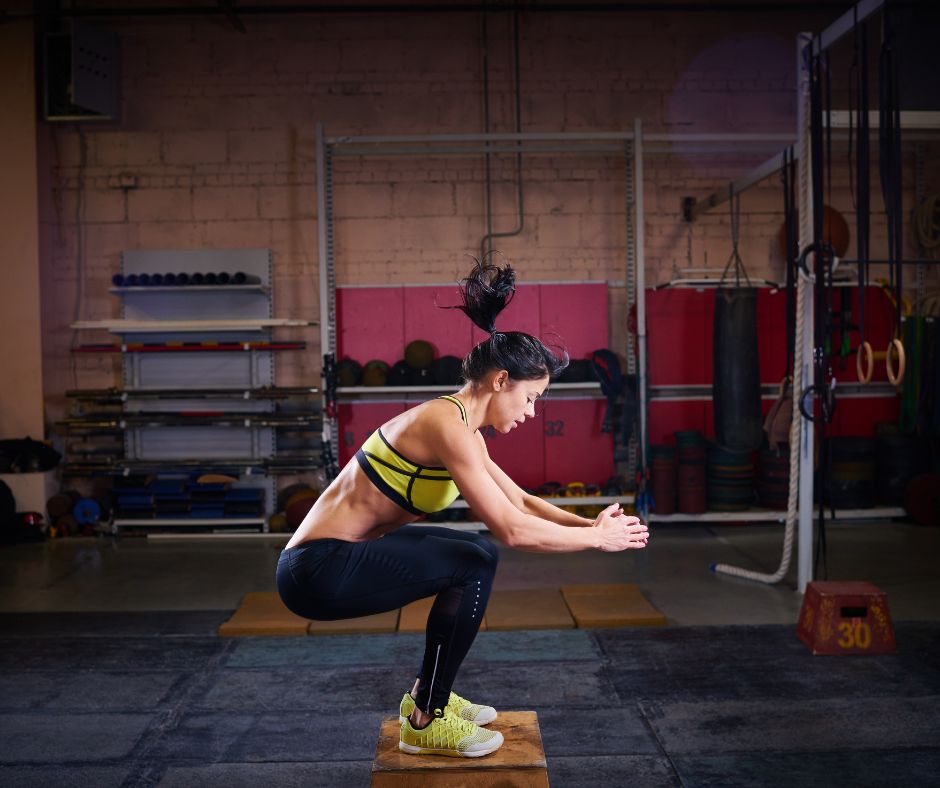
Stand on an elevated surface with your heels hanging off the edge. Keeping your legs straight, raise your heels as high as possible before lowering them below the level of your toes. Be sure to keep your trunk stable throughout the exercise. Repeat the calf raise for the desired number of repetitions.
- Seated calf raises exercise.
Sit on the edge of a bench with a weight in your left hand. Keeping your left leg straight, raise your left heel as high as possible before lowering it below the level of your left toes. Keep your right leg straight and your trunk stable throughout the exercise. Repeat the calf raise for the desired number of repetitions before switching sides.
- Jumping rope exercise

Stand with your feet shoulder-width apart and the rope behind you. Swing the rope over your head and jump when it reaches your feet. Land on both feet with your knees slightly bent. Repeat the jump for the desired number of repetitions.
5. Yoga Poses
- Tree Pose yoga
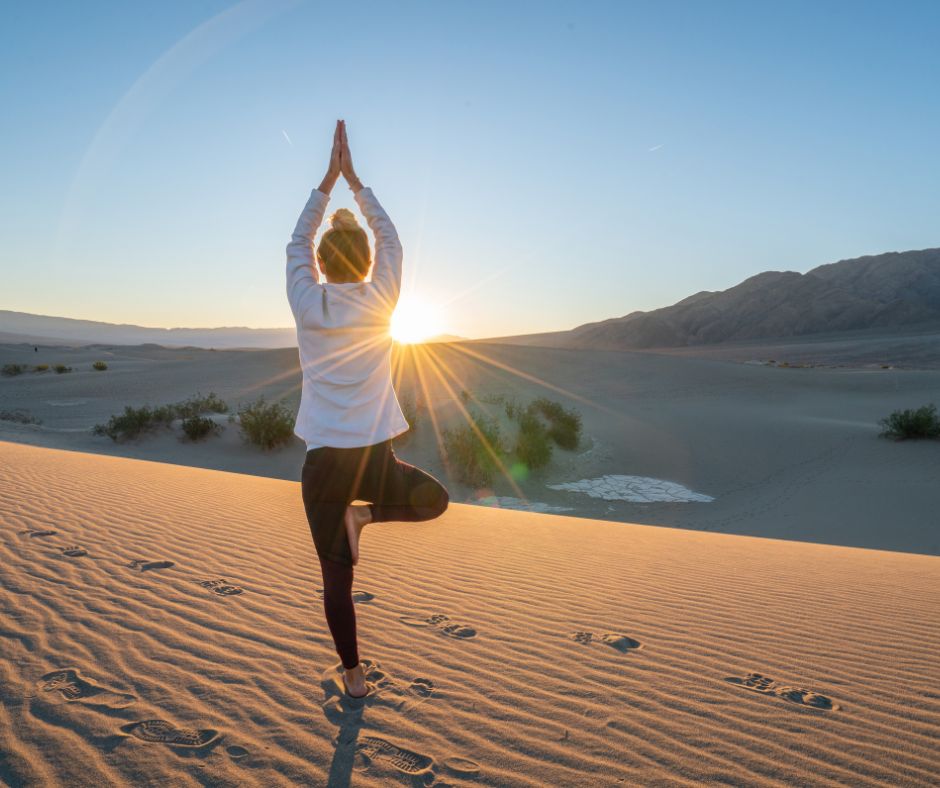
Stand with your feet shoulder-width apart and place your left foot on your right thigh. Press your palms together in front of your chest. Hold the pose for the desired amount of time before switching sides.
2. Hero Pose yoga
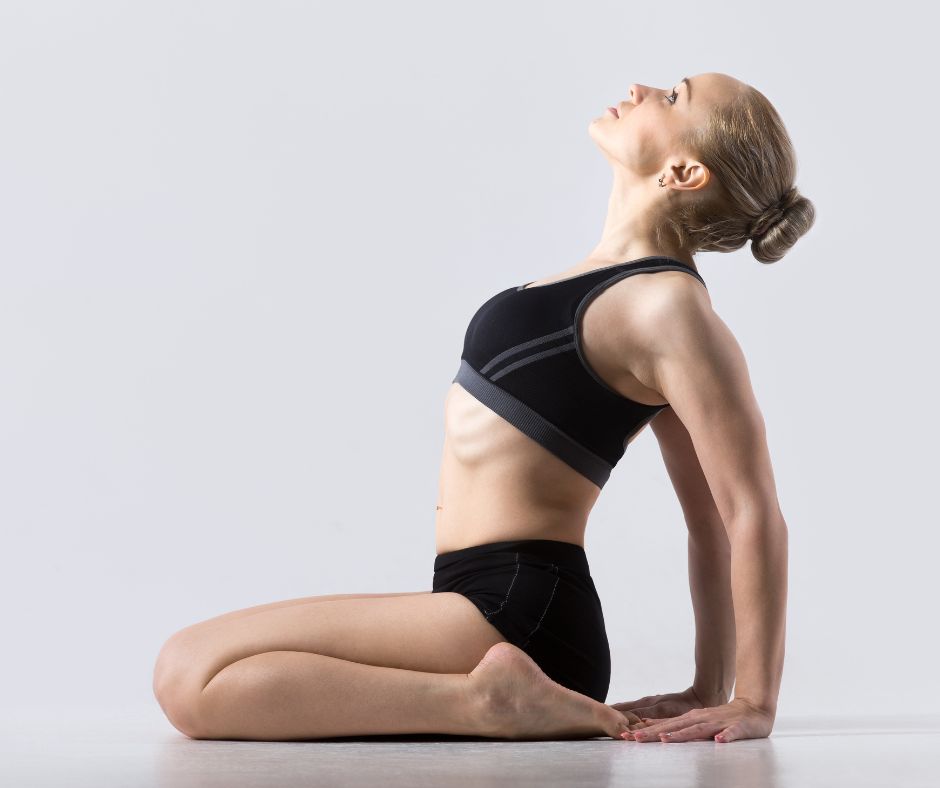
Kneel on the ground with your knees hip-width apart and your feet together. Lower your butt to your heels and stretch your arms overhead. Hold the pose for the desired amount of time.
3. Wide angle seated forward bend.
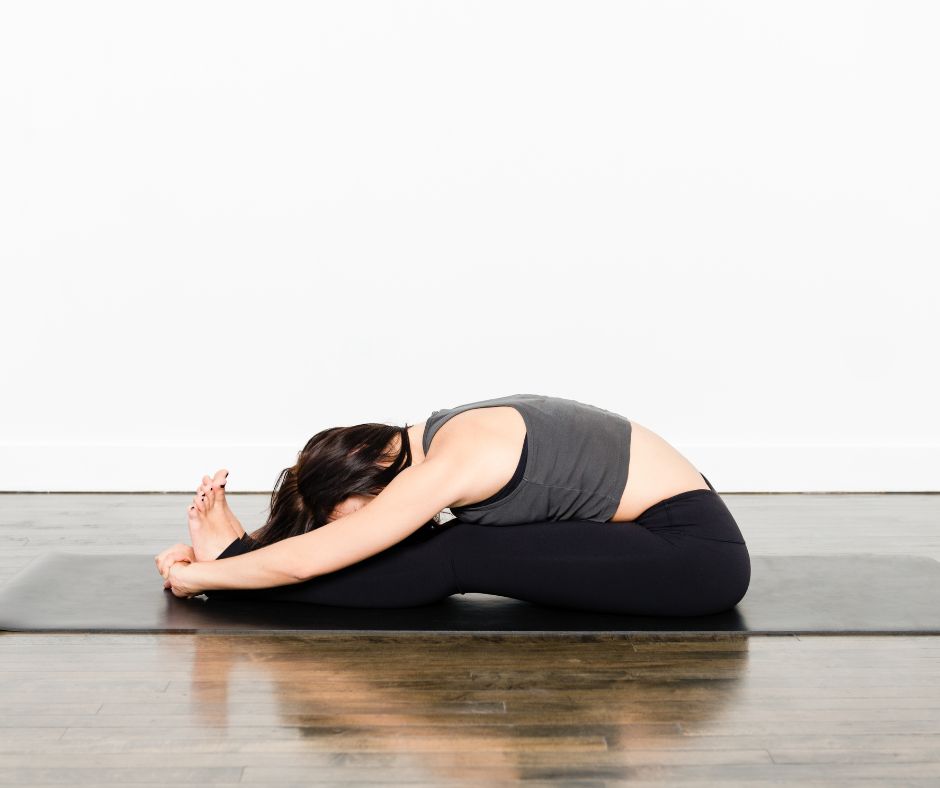
Sit on the ground with your legs straight out in front of you. Lean forward, placing your hands on the ground. Walk your hands forward until your torso is parallel to the ground. Hold the pose for the desired amount of time.
Other exercises such as swimming are good but if you have pain in your muscles, consult a doctor for a recommendation of practices.
6. Compression stocking
Compression stocking also helps to improve blood regulation.
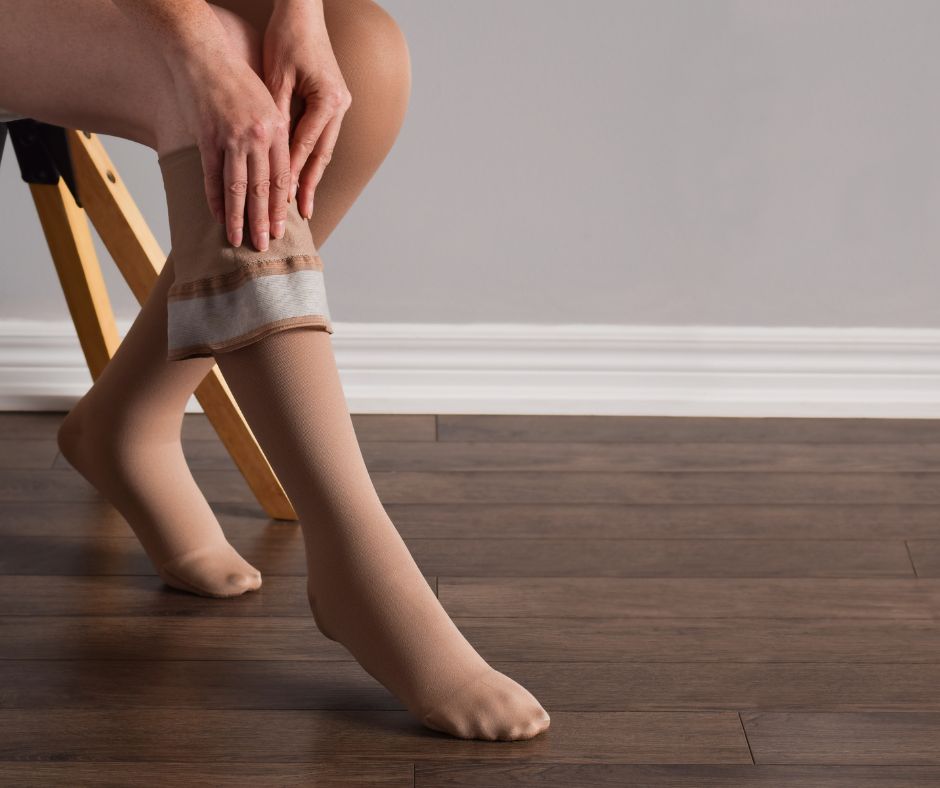
A compression stocking is support hosiery that helps prevent blood clots from forming in the legs. The stocking applies graduated compression to the leg, with the level of compression most significant at the ankle and gradually decreasing as it goes up the leg. This helps keep the blood from pooling in the leg and helps prevent blood clot formation.
The unique elastic is used to tighten and support lower leg veins.
The tightness and constriction help the blood to flow back to its position and lower the swollen part.
Conclusion
Above, we have discussed what are Cankles and how to cure them. We also know now Cankles are not dangerous directly, but they can affect a person’s self-esteem.
It is not easy to get rid of cankles.
However, one can improve it through exercise and a healthy diet.
The severe condition may lead to surgery as well.
There could be direct and indirect causes of cankles, such as genetics, heart diseases, kidney infection, diabetes, Lipedema, etc.
Cankles can improve through a good diet of green vegetables, fruits, and high-fiber food, which could help one improve body fat, and cankles improve side by side. Improving blood regulation enables one to less swollen ankles and thus improve the cankles.
Frequently Asked Questions (FAQ)
What are cankles?
Cankles are a condition where the calf and ankle appear to be the same circumference, with no defined ankle.
How to get rid of cankles?
There are a few things that may help. These include:
-Exercise
-Weight loss
-Compression socks or stockings
-Massage
-Creams or lotions that contain caffeine or other ingredients that claim to help with circulationWhat causes cankles?
There are a few theories. These include:
– genetics
– obesity
– fluid retention
– pregnancy
– certain medicationswhat do cankles look like?
Cankles can look like a continuous curve from the calf to the foot, with no defined ankle.
Are cankles genetic?
There is some evidence that cankles may be genetic.
Are cankles bad?
Some people may find them cosmetically unappealing.Does coolsculpting work on cankles?
Coolsculpting is a treatment that uses extreme cold to destroy fat cells. It is unclear if coolsculpting is effective for treating cankles.
How much does cankle surgery cost?
Cankle surgery is a cosmetic procedure designed to improve the appearance of the calf and ankle. The cost of cankle surgery can vary depending on the specific procedure.
How to avoid cankles during pregnancy?
There are a few things that may help. These include:
-Exercise
-Weight loss
-Compression socks or stockings
-Massage
-Creams or lotions that claim to help with circulationhow to dress with cankles?
There are a few things to keep in mind when dressing with cankles. These include:
– avoiding tight clothing around the calf and ankle
– choosing clothing that is loose and flowing
– avoiding high heels
– wearing supportive shoeswhy are cankles called cankles?
The word “cankles” is a combination of the words “calf” and “ankles.”
can you get rid of cankles with exercise?
Exercise may help to reduce the appearance of cankles.
Are cankles good for running?
There is no evidence that cankles are good or bad for running.
Are cankles just fat?
Cankles may be caused by excess fat, but they can also be caused by other factors such as fluid retention or genetic factors.
What exercises help with cankles?
There are a few exercises that may help. These include:
– calf raises
– ankle circles
– ankle rolls
– toe raiseswhat are cankles in Spanish?
Cankles are “calcetines” in Spanish.
What kind of shoes for cankles?
There are a few things to remember when choosing shoes for cankles. These include:
– avoiding high heels
– choosing a shoe with a wide toe box
– choosing a shoe with good arch support
– avoiding shoes that are tight around the calf and anklewhy do babies have cankles?
Babies have cankles because they have a high percentage of body fat.
What is the medical term for cankles?
The medical term for cankles is “ankle-foot edema.”
Will drinking water take away cankles?
Drinking water may help to reduce the appearance of cankles by reducing fluid retention.








